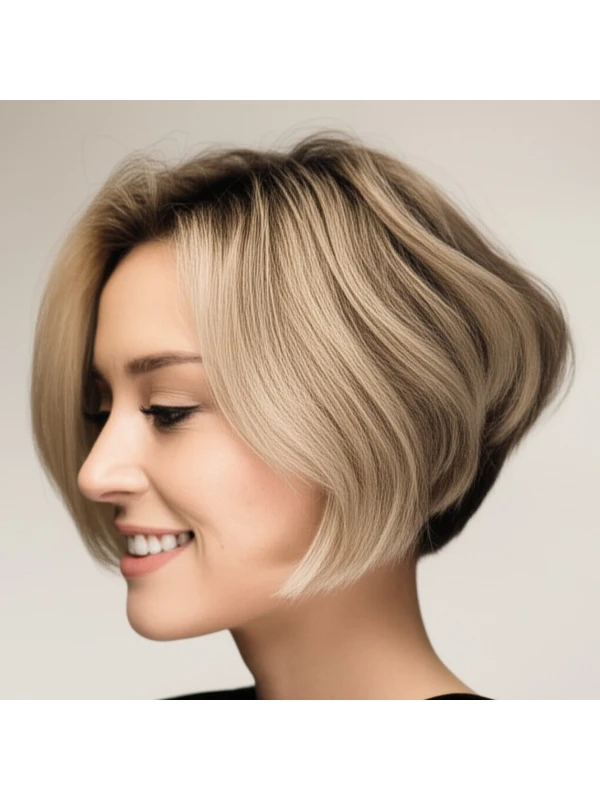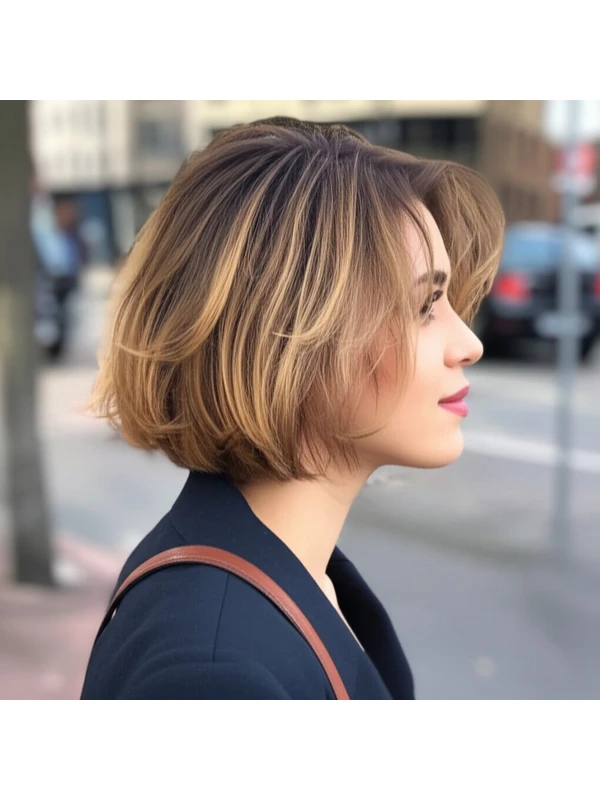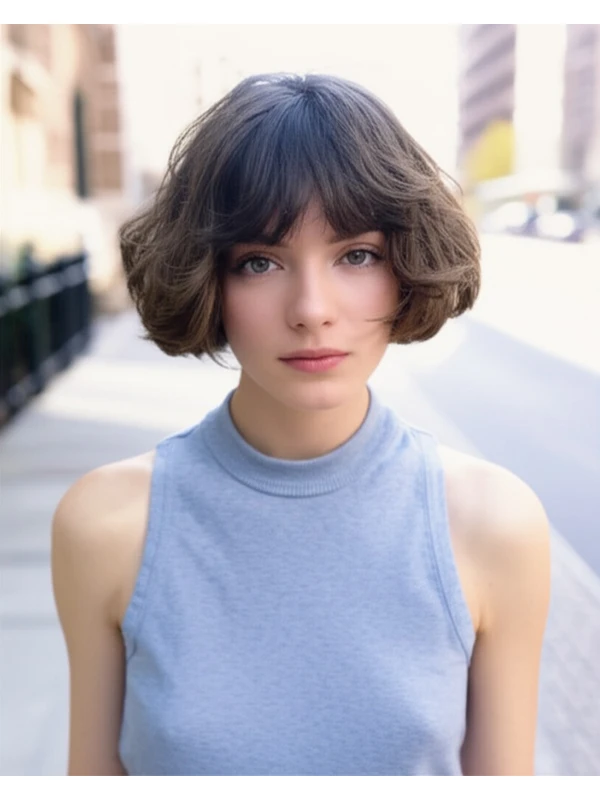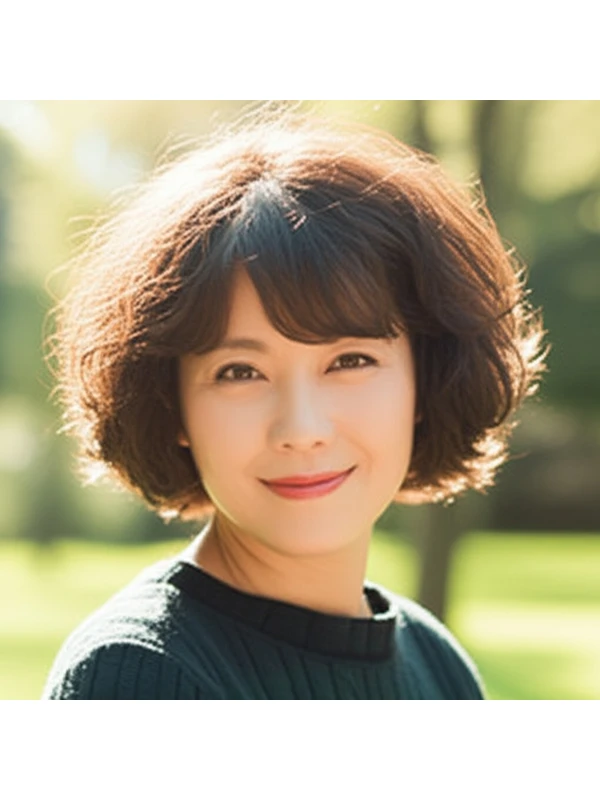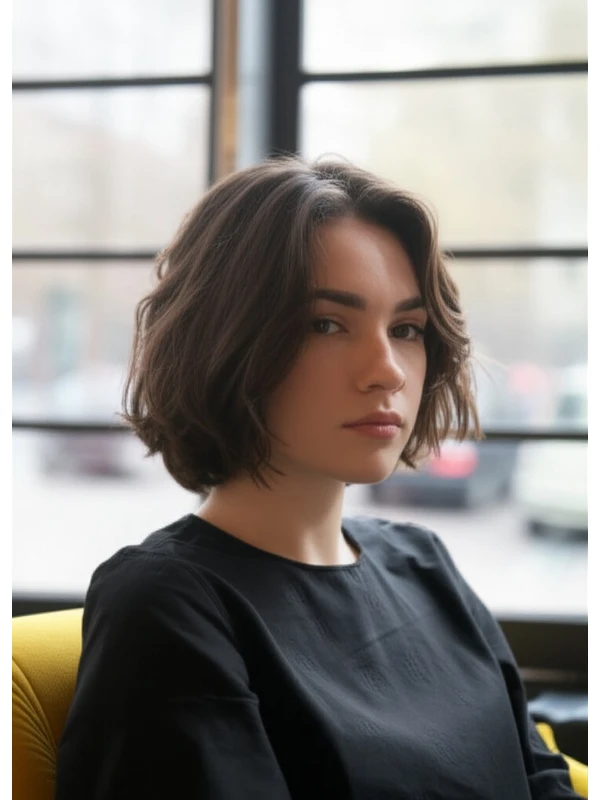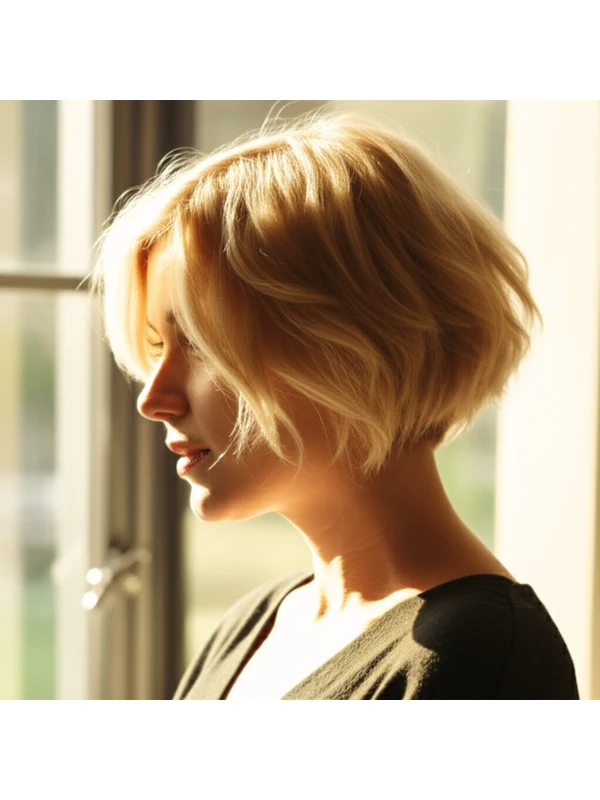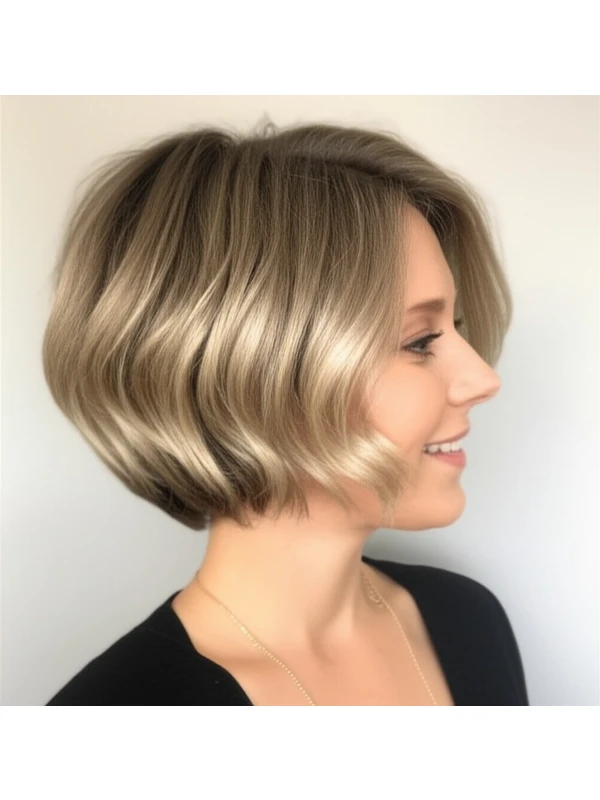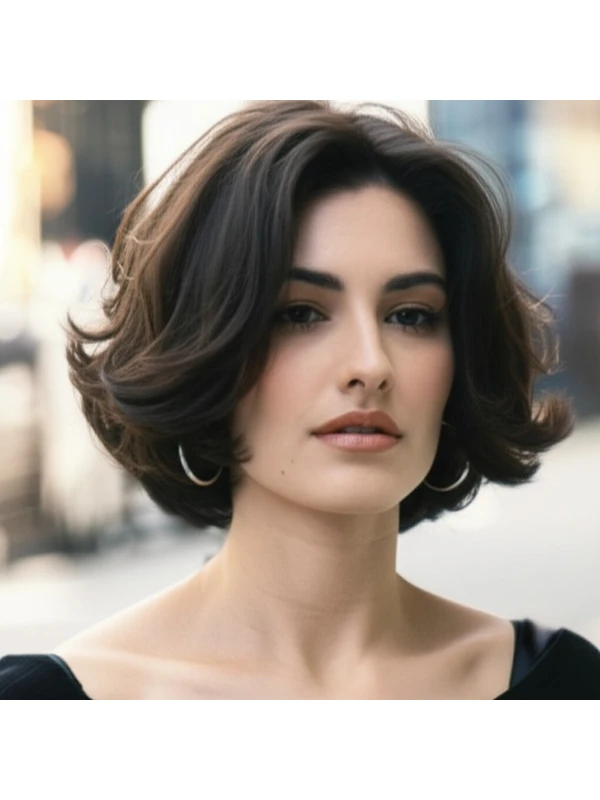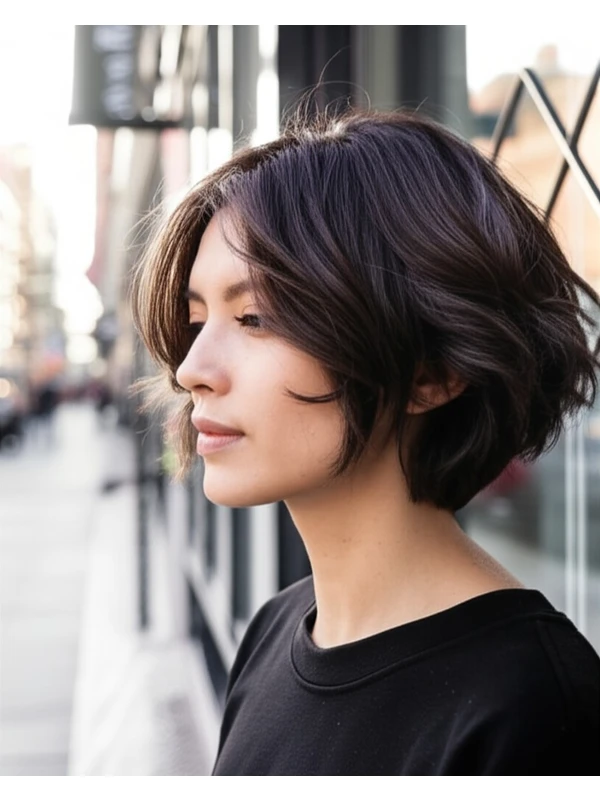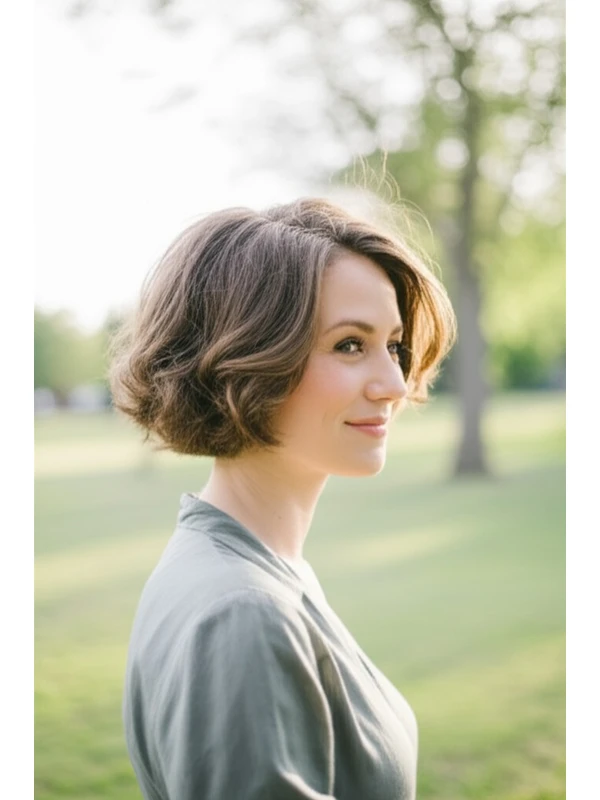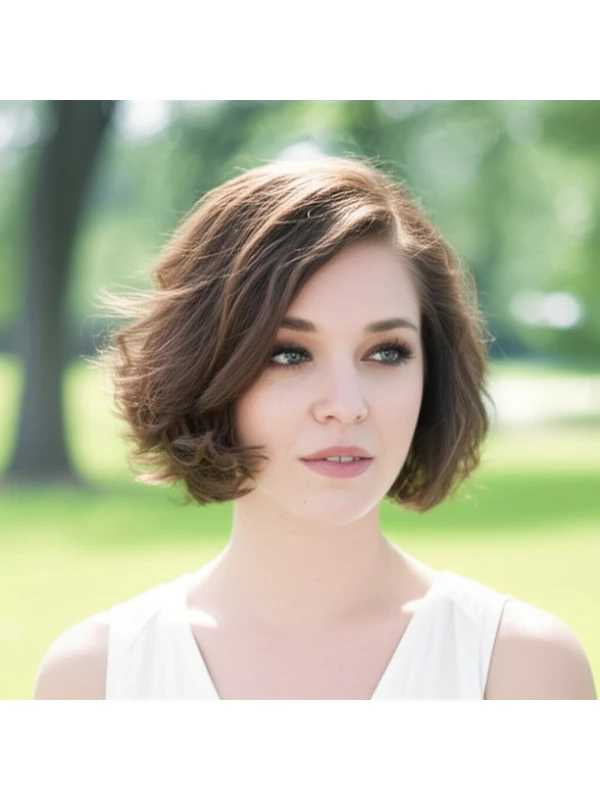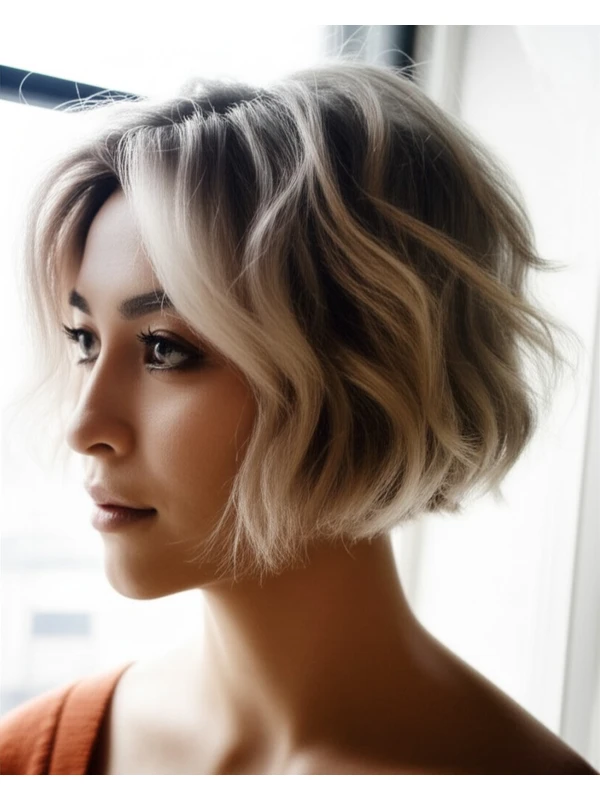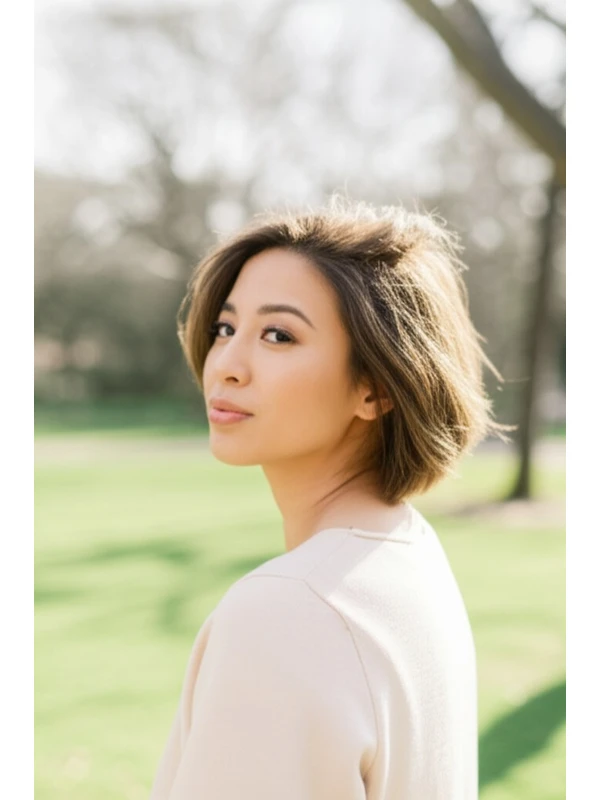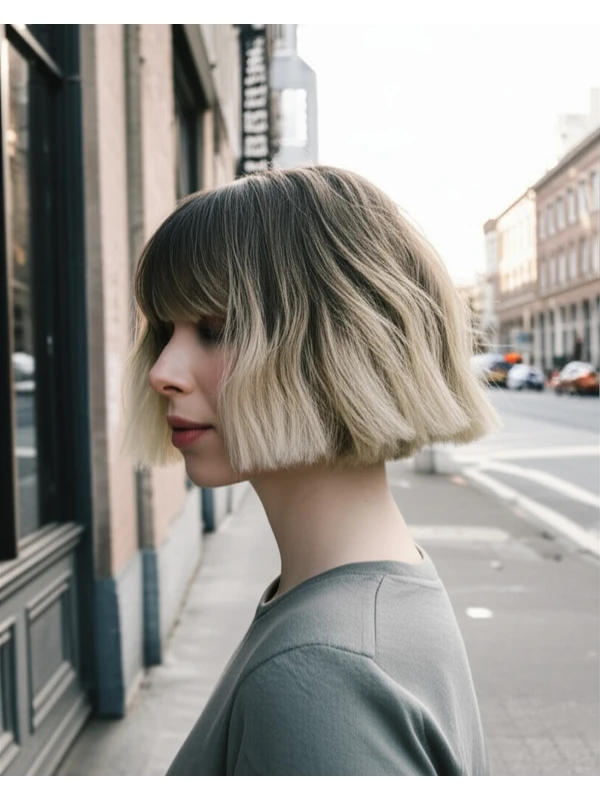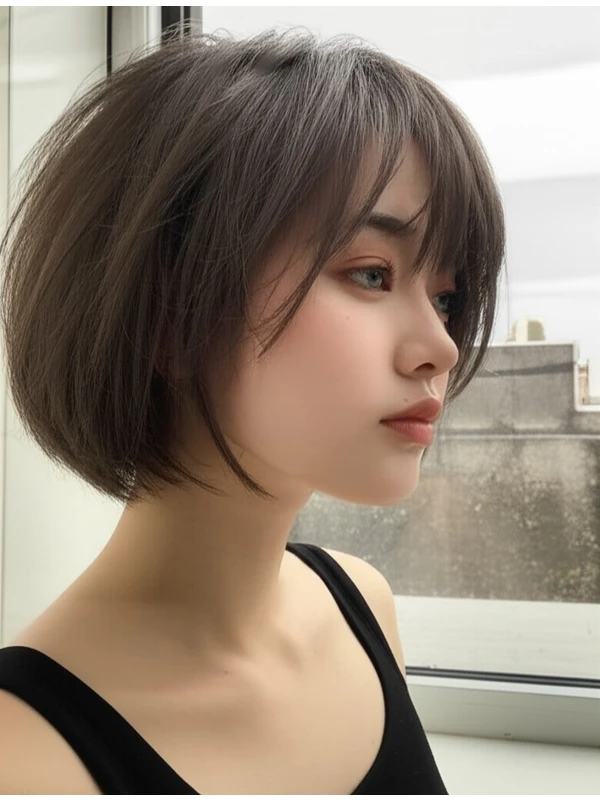#The Classic Bob: A Timeless Style Guide
The bob haircut is a true icon – it’s been stylish for decades and remains a favorite for good reason! This guide breaks down everything you need to know about the classic bob, from finding the right fit for your face shape to mastering everyday styling. Let's dive in!
#1) Background & Definition: What Is A Classic Bob?
The "classic bob" is more than just a short haircut; it’s a specific geometry. Think of it as a blunt, one-length cut that typically falls somewhere between the chin and shoulders. It's characterized by its simplicity and clean lines.
Key Features:
- One Length (Mostly): The defining feature is generally even length around the head, though slight variations can be incorporated for texture or face-flattering angles.
- Blunt Edge: A crisp, straight line at the bottom creates a polished look.
- Minimal Layers: Classic bobs usually have little to no layering.
Length Ranges:
- Chin Bob: Hits right at the chin (very chic and bold).
- Jaw-Length Bob: Slightly shorter than the chin, emphasizing cheekbones.
- Mid-Neck Bob: Falls around the middle of the neck – a versatile length for most.
- Collarbone Bob (or "Lob"): Extends to just above or at the collarbone - offering more styling options and softness.
Alternative Names: You might hear it called a “French bob,” “Dutch bob” (often slightly longer), or simply, "the bob."
#2) Face Shape Fit: Finding Your Perfect Bob
The beauty of the classic bob is its adaptability, but understanding how it interacts with your face shape is key.
- Oval: Lucky you! Almost any length and variation of a bob will look fantastic on an oval face. A slightly angled bob (longer in front) can elongate the face further if desired.
- Fringe Options: Side-swept bangs, blunt fringe, or no bangs – all work well.
- Round: A classic bob with some height at the crown and a slight angle (shorter in back, longer in front) helps to elongate a round face. Avoid bobs that are too blunt and hit right at the cheekbone as this can accentuate width.
- Fringe Options: Side-swept bangs soften the face; avoid blunt, straight-across fringes which can make your face appear wider.
- Square: Soften a strong jawline with a classic bob that has subtle layering or a gentle curve at the ends. Avoid sharp, angular cuts.
- Fringe Options: Soft, wispy bangs or side-swept bangs work well to soften angles.
- Heart: A chin-length or slightly longer bob balances a wider forehead and pointed chin. Volume on the sides can add balance.
- Fringe Options: Side-swept bangs are flattering; avoid short, blunt fringes that emphasize width at the forehead.
- Diamond: A classic bob with layers around the cheekbones helps to soften angles and highlight your eyes. A chin-length or slightly longer style is generally best.
- Fringe Options: Side-swept bangs can create softness; a blunt fringe could work if you want to minimize forehead width.
- Oblong (Long): A bob that hits at the jawline or collarbone adds width and visual balance. Layers add volume and prevent the face from appearing too long.
- Fringe Options: A blunt, straight-across fringe can shorten the face; side-swept bangs also work well to break up length.
#3) Body Proportions & Height Guidance
Your overall body shape and height influence how a bob looks on you.
- Petite: A shorter chin or jaw-length bob can make your neck appear longer, preventing the style from overwhelming your frame.
- Average Height: Most bobs work well! Consider the shoulder width – wider shoulders might benefit from slightly angled styles to create balance.
- Tall: A collarbone-length bob (lob) or a longer mid-neck bob can look very elegant and proportional on taller individuals.
- Narrow Shoulders: Add volume at the sides of your bob with subtle layering to visually broaden shoulders.
- Broad Shoulders: Keep the silhouette clean and streamlined; avoid excessive volume at the shoulder line, which can accentuate width.
- Short Neck: A chin-length or slightly longer bob is generally more flattering than a very short one, as it creates the illusion of a longer neck.
#4) Works Best With Hair Types & Densities
The classic bob’s versatility shines here!
- Straight Hair: A sleek, blunt cut looks incredible and highlights shine.
- Wavy Hair: A classic bob can enhance natural waves – ask your stylist for subtle texturizing to avoid a "triangle" shape as it dries.
- Curly/Coily Hair: While possible, requires careful planning! Shrinkage is crucial to consider (a chin-length cut might end up much shorter when dry). A slightly longer bob (collarbone length) often works better for curl definition and manageability. Layering is essential to prevent a "pyramid" shape.
- Fine Hair: A blunt bob can create the illusion of thicker hair, but avoid overly long styles which can make it look even thinner.
- Medium/Thick Hair: A classic bob works beautifully! Consider subtle layering for movement and to reduce bulk.
- Density Tips: For denser hair, ask your stylist to thin out the ends slightly to prevent a heavy, blunt appearance.
#5) Styling Variations: From Sleek to Textured
The core cut is simple, but styling possibilities are endless!
- Sleek vs. Textured: A sleek bob uses heat tools (straightener) for a polished look. A textured bob incorporates air-drying and texturizing products for a more undone feel.
- Middle vs. Side Part: A middle part creates symmetry, while a side part adds softness and volume.
- Fringe Variations: Blunt bangs, side-swept bangs, wispy bangs – the choice is yours!
- Occasion Styling:
- Casual: Air-dried with texturizing spray.
- Office: Sleek and straight with a polished finish.
- Evening: Add waves or curls using a curling iron or hot rollers for a more glamorous look.
#6) Maintenance: Keeping Your Bob Looking Sharp
- Trim Cadence: Every 4-8 weeks, depending on how quickly your hair grows and the desired shape. Curly/coily hair may need trims every 6-12 weeks due to shrinkage.
- At-Home Routine: Gentle shampooing (2-3 times per week), moisturizing conditioner, weekly deep conditioning treatment for dry or damaged hair.
- Heat vs. Air Dry: Minimize heat styling whenever possible to protect hair health.
- Product Checklist:
- Shampoo & Conditioner: Tailored to your hair type.
- Leave-in Conditioner: For moisture and detangling (especially important for curly/coily hair).
- Styler: Mousse, gel, or cream depending on desired texture.
- Finishing Spray: Heat protectant if using heat tools; shine spray for a polished look.
- Estimated Daily Styling Time: 5-20 minutes (depending on styling complexity and hair type).
#7) Grow-Out Roadmap
The classic bob evolves as it grows out.
- Months 1-3: The shape remains relatively consistent, but can start to feel longer.
- Months 3-6: As the length increases, consider adding subtle layers or face-framing pieces for movement and to avoid a boxy look. Consult your stylist about transitioning into a lob (long bob).
#8) Color Pairings: Elevating Your Bob
Color can dramatically enhance a classic bob!
- Cool Undertones: Ash blonde, cool brown, silver – these shades create a sleek, modern vibe.
- Warm Undertones: Honey blonde, caramel brown, copper – these tones add warmth and dimension.
- Low-Commitment Options: Balayage or highlights can add depth without requiring frequent touch-ups.
#9) Season & Occasion Guide
- Spring/Summer: Lighter colors and textured styles feel fresh and airy.
- Fall/Winter: Richer, warmer tones and sleek styles exude sophistication.
- Work: A polished, classic bob is always appropriate.
- Weddings/Parties: Add waves or curls for a more festive look.
#10) Cost & Time
- Salon Time: Typically 45-90 minutes. More complex styles (with color or extensive layering) will take longer.
- Estimated Price Range: Relatively affordable, but prices vary by location and stylist experience—expect to pay a moderate amount for the cut alone.
#11) Pros & Cons
Pros: Timeless style, versatile, relatively easy to maintain (with regular trims), flattering on many face shapes. Cons: Requires frequent trims to maintain shape, can look harsh if not styled correctly, may require more styling time than longer styles.
#12) Salon Consultation Script: Questions to Ask
- “I’m interested in a classic bob. What length would you recommend based on my face shape and hair type?”
- "Can we discuss how layering might affect the style?"
- “What styling products will I need, and can you show me how to use them?”
- "How often should I come back for trims to maintain this look?"
#FAQs
- Will a bob make my hair look thicker? A blunt bob can create the illusion of more volume, especially for fine hair.
- Can I get a classic bob with curly hair? Yes, but it requires careful planning and layering to account for shrinkage and maintain shape.
- How do I prevent my bob from looking boxy? Ask your stylist about subtle face-framing or layers to soften the edges.
- Is a chin-length bob too severe? Not necessarily! The right styling (soft waves, side part) can make it very flattering.
- What if I want bangs with my classic bob? Absolutely! Discuss your desired fringe style and placement with your stylist to ensure it complements your face shape.
- How much will this cost me overall in terms of upkeep (haircuts, color)? This depends on the salon you choose and how often you get color treatments, but budget for moderate ongoing expenses.
